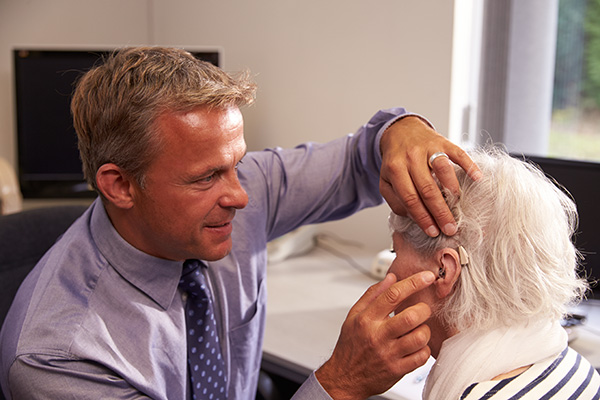3 Signs That You Are Wearing an Ill-fitting Hearing Aid
Manufacturers design most hearing aids to provide a bespoke fit for the
Now Offering the Latest In Hearing Innovation: The Oticon Intent Learn More

By: admin | November 25, 2023
Did you know that approximately 20 percent of Americans, totaling over 48 million individuals, grapple with hearing loss? This condition spans across all age groups and can vary in severity, duration and permanence depending on its cause. Despite these statistics, a significant number of those affected refrain from seeking treatment due to widespread myths surrounding hearing aids. If you’ve been contemplating whether to consult a hearing instrument specialist (HIS) or not, consider this compilation of hearing aid myths below. You might find the truth to be surprising and encouraging.
While hearing aids can vastly improve your hearing ability, they won’t give you perfect hearing. That’s because no amount of amplification can restore function in the ear. Instead, it is better to think of hearing aids as devices that enable people to manage their hearing better. Units make specific sounds that you struggle to hear louder and help you adapt to different noise environments, like a busy office or a concert.
Another misconception is that hearing aids are too expensive. Many people imagine having to make significant investments to get the devices they need. The reality is that the hearing aid market is like any other: some devices are more costly, and others are more affordable. The good news is that even the most basic models now offer comprehensive functionality, making them a viable option.
You might also hear people saying that hearing aids aren’t necessary for mild hearing loss. Again, this is a myth. Even people with mild hearing loss can experience communication issues. These individuals sometimes find it challenging to focus on what people are saying or hear quiet sounds, like the rustling of leaves in the fall. Hearing aids can help anyone with any level of hearing loss.
Another misconception is that you only need one hearing aid. In some circumstances, this is true, but rarely. Most people have hearing loss in both ears and benefit from binaural setups. The reason these are beneficial has to do with directional hearing. Two hearing aids make it possible to deliver sounds from the environment to the ears at slightly different timings, mimicking how natural directional hearing works. The brain can then use this information to locate the incoming noise in the surrounding space, enhancing the hearing aids’ practicality.
While hearing aids bought online might be convenient, they rarely give you the results you want. Poorly set up devices are uncomfortable and can actually hinder your ability to hear. That’s why many people go to a specialist for testing and device recommendations. They can help you choose a suitable model and calibrate it for you, based on hearing test results.
Another myth you might encounter is that wearing hearing aids all day is uncomfortable. While it is true that donning poorly fitting assistive hearing devices might cause discomfort, professionally fitted ones won’t. The reason for this has to do with the earmold. These can perfectly conform to the shape of your ear, reducing pressure points that make all-day wearing uncomfortable.
Some people also say that hearing loss is normal after a certain age. Therefore, there’s no point in doing anything about it. Again, this reasoning doesn’t work. Hearing aids can help people living with hearing loss, regardless of age. In fact, allowing your hearing to continue to deteriorate can lead to more serious conditions like anxiety, depression and cognitive decline.
On the flip side, you might also hear that hearing aids are only for older adults. But, again, this is untrue. Hearing aids are for anyone with hearing loss. For example, hearing aids can help people with congenital hearing loss detect more sounds in their environment. That’s why many children wear hearing aids. These devices now come in all shapes and sizes, making them as discreet as you could possibly want.
<p>In the past, this misconception was true. However, <a href=”https://soundchoiceofabq.com/hearing-aids/”>modern hearing aids</a> are significantly more sophisticated. That’s because they only amplify the sound frequencies you can’t hear as well. The volume of other pitches is normal. It’s crucial to note that proper programming from a HIS is necessary to get this fine-tuned listening experience.</p>
The final misconception is that all hearing aids are big and obvious, preventing you from wearing them discreetly. With the arrival of in-the-ear (ITE) and in-the-canal (ITC) devices, this is untrue. Many models are impossible to see from the outside, allowing you to keep your privacy and better hearing!
If you are ready to learn more about how you could benefit from hearing aids, schedule your consultation today. The team at Sound Choice Hearing is ready to answer all of your questions – just give us a call at (505) 565-7960.

Manufacturers design most hearing aids to provide a bespoke fit for the
By: admin | June 14, 2022

Many people, including some professionals, associate hearing loss with
By: admin | May 30, 2022

If you believe that you have hearing loss, you may have considered whether
By: admin | April 24, 2022
